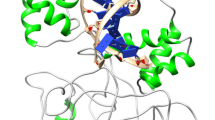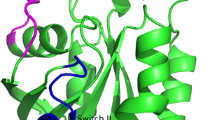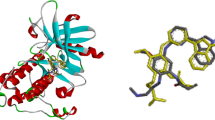Abstract
Context
Squamous cell carcinoma (SCC) is the second most common type of skin cancer caused by malignant keratinocytes. Multiple studies have shown that protein mutations have a significant impact on the development and progression of cancer, including SCC. We attempted to decode the effect of single amino acid mutations in the Bruton’s tyrosine kinase (BTK) protein in this study. Molecular dynamic (MD) simulations were performed on selected deleterious mutations of the BTK protein, revealing that the variants adversely affect the protein, indicating that they may contribute to the prognosis of SCC by making the protein unstable. Then, we investigated the interaction between the protein and its mutants with ibrutinib, a drug designed to treat SCC. Even though the mutations have deleterious effects on protein structure, they bind to ibrutinib similarly to their wild type counterpart. This study demonstrates that the effect of detected missense mutations is unfavorable and can result in function loss, which is severe for SCC, but that ibrutinib-based therapy can still be effective on them, and the mutations can be used as biomarkers for Ibrutinib-based treatment.
Methods
Seven different computational techniques were used to compute the effect of SAVs in accordance with the experimental requirements of this study. To understand the differences in protein and mutant dynamics, MD simulation and trajectory analysis, including RMSD, RMSF, PCA, and contact analysis, were performed. The free binding energy and its decomposition for each protein-drug complex were determined using docking, MM-GBSA, MM-PBSA, and interaction analysis (wild and mutants).











Similar content being viewed by others
Data availability
The authors confirm that all the necessary data to replicate the results of this study is included in the manuscript.
References
Fania L et al (2021) Cutaneous squamous cell carcinoma: From pathophysiology to novel therapeutic approaches. Biomedicines 9(2):1–33. https://doi.org/10.3390/BIOMEDICINES9020171
Stratigos A, Garbe C, Lebbe C, … J. M.-E. Journal of, and undefined 2015, ‘Diagnosis and treatment of invasive squamous cell carcinoma of the skin: European consensus-based interdisciplinary guideline’, Elsevier, Accessed: Jul. 29, 2022. [Online]. Available: https://sci-hub.do/https://www.sciencedirect.com/science/article/pii/S0959804915006255
Geidel G, Heidrich I, Kött J, Schneider SW, Pantel K, Gebhardt C (2022) Emerging precision diagnostics in advanced cutaneous squamous cell carcinoma. Npj Precision Oncology 6(1):1–8. https://doi.org/10.1038/s41698-022-00261-z
Watson M, Holman DM, Maguire-Eisen M (2016) Ultraviolet radiation exposure and its impact on skin cancer risk. Semin Oncol Nurs. 32(3):241. https://doi.org/10.1016/J.SONCN.2016.05.005
Li S et al. (2021) Molecular subtypes of oral squamous cell carcinoma based on immunosuppression genes using a deep learning approach. Front Cell Dev Biol. 9:687245. https://doi.org/10.3389/FCELL.2021.687245/FULL
Veness MJ (2007) ‘High-risk cutaneous squamous cell carcinoma of the head and neck. J Biomed Biotechnol. (3):80572. https://doi.org/10.1155/2007/80572
Howell JY, Ramsey ML (2022) Squamous cell skin cancer’, StatPearls, Accessed: Nov. 20, 2022. [Online]. Available: https://www.ncbi.nlm.nih.gov/books/NBK441939/
Sanderson RJ, Ironside JAD, Wei WI (2002) Squamous cell carcinomas of the head and neck. BMJ : British Med J 325(7368):822. https://doi.org/10.1136/BMJ.325.7368.822
Pomerantz MM, Freedman ML (2011) The genetics of cancer risk. Cancer J 17(6): 416. https://doi.org/10.1097/PPO.0B013E31823E5387
Zhou G, Chen M, Ju CJT, Wang Z, Jiang JY, Wang W (2020) Mutation effect estimation on protein-protein interactions using deep contextualized representation learning. NAR Genom Bioinform. 2(2). https://doi.org/10.1093/NARGAB/LQAA015
Reva B, Antipin Y, Sander C (2011) Predicting the functional impact of protein mutations: Application to cancer genomics. Nucleic Acids Res 39(17): e118–e118. https://doi.org/10.1093/NAR/GKR407
Smith CIE, Islam TC, Mattsson PT, Mohamed AJ, Nore BF, Vihinen M (2001) The Tec family of cytoplasmic tyrosine kinases: Mammalian Btk, Bmx, Itk, Tec, Txk and homologs in other species. Bioessays 23(5): 436–446. https://doi.org/10.1002/BIES.1062
Ponader S, Burger JA (2014) Bruton’s tyrosine kinase: From X-linked agammaglobulinemia toward targeted therapy for B-cell malignancies. J Clin Oncol 32(17):1830–1839. https://doi.org/10.1200/JCO.2013.53.1046
Whiteside TL (2008) ‘The tumor microenvironment and its role in promoting tumor growth. Oncogene 27(45):5904. https://doi.org/10.1038/ONC.2008.271
Szklener K, Michalski A, Żak K, Piwoński M, Mańdziuk S (2022) ‘Ibrutinib in the treatment of solid tumors: Current state of knowledge and future directions. Cells 11(8): 1338. https://doi.org/10.3390/CELLS11081338
Davids MS, Brown JR (2014) Ibrutinib: A first in class covalent inhibitor of Bruton’s tyrosine kinase. Future Oncol 10(6): 957. https://doi.org/10.2217/FON.14.51
Futreal PA et al (2004) ‘A census of human cancer genes. Nat Rev Cancer 4(3):177. https://doi.org/10.1038/NRC1299
Forbes SA et al (2010) COSMIC (the catalogue of somatic mutations in cancer): a resource to investigate acquired mutations in human cancer. Nucleic Acids Res 38(Database issue): D652-7. https://doi.org/10.1093/NAR/GKP995
Berglöf A et al (2015) ‘Targets for ibrutinib beyond B cell malignancies. Scand J Immunol 82(3):208. https://doi.org/10.1111/SJI.12333
Hassan MS, Shaalan AA, Dessouky MI, Abdelnaiem AE, ElHefnawi M (2019) Evaluation of computational techniques for predicting non-synonymous single nucleotide variants pathogenicity. Genomics 111(4): 869–882. https://doi.org/10.1016/J.YGENO.2018.05.013
Reva B, Antipin Y, Sander C (2007) Determinants of protein function revealed by combinatorial entropy optimization. Genome Biol 8(11):R232. https://doi.org/10.1186/GB-2007-8-11-R232
Ng PC, Henikoff S (2001) Predicting deleterious amino acid substitutions. Genome Res 11(5): 863. https://doi.org/10.1101/GR.176601
Niroula A, Urolagin S, Vihinen M (2015) PON-P2: Prediction method for fast and reliable identification of harmful variants. PLoS One 3;10(2):e0117380. https://doi.org/10.1371/JOURNAL.PONE.0117380
Capriotti E, Martelli PL, Fariselli P, Casadio R (2017) Blind prediction of deleterious amino acid variations with SNPs&GO. Hum Mutat 38(9): 1064–1071. https://doi.org/10.1002/HUMU.23179
Choi Y, Chan AP (2015) PROVEAN web server: A tool to predict the functional effect of amino acid substitutions and indels. Bioinformatics 31(16): 2745. https://doi.org/10.1093/BIOINFORMATICS/BTV195
Adzhubei I, Jordan DM, Sunyaev SR (2013) ‘Predicting functional effect of human missense mutations using PolyPhen-2’, Current protocols in human genetics / editorial board, Jonathan L. Haines ... [et al.]. 07(SUPPL.76):Unit7.20. https://doi.org/10.1002/0471142905.HG0720S76.
Pejaver V et al (2020) ‘Inferring the molecular and phenotypic impact of amino acid variants with MutPred2. Nat Commun 11(1):1–13. https://doi.org/10.1038/s41467-020-19669-x
Bender AT et al (2017) ‘Ability of Bruton’s tyrosine kinase inhibitors to sequester Y551 and prevent phosphorylation determines potency for inhibition of Fc receptor but not B-cell receptor signaling. Mol Pharmacol 91(3):208–219. https://doi.org/10.1124/MOL.116.107037
Guex N, Peitsch MC, Schwede T (2009) Automated comparative protein structure modeling with SWISS-MODEL and Swiss-PdbViewer: A historical perspective. Electrophoresis 30(Suppl 1). https://doi.org/10.1002/ELPS.200900140
Abraham MJ et al (2015) ‘GROMACS: High performance molecular simulations through multi-level parallelism from laptops to supercomputers. SoftwareX 1–2:19–25. https://doi.org/10.1016/J.SOFTX.2015.06.001
Huang J et al (2017) ‘CHARMM36m: An improved force field for folded and intrinsically disordered proteins. Nat Methods 14(1):71. https://doi.org/10.1038/NMETH.4067
Lee J et al (2016) CHARMM-GUI input generator for NAMD, GROMACS, AMBER, OpenMM, and CHARMM/OpenMM simulations using the CHARMM36 additive force field. J Chem Theory Comput 12(1):405–413. https://doi.org/10.1021/ACS.JCTC.5B00935/ASSET/IMAGES/LARGE/CT-2015-00935E0005.JPEG
David CC, Jacobs DJ (2014) Principal component analysis: A method for determining the essential dynamics of proteins. Methods Mol Biol 1084: 193. https://doi.org/10.1007/978-1-62703-658-0_11
Pedregosa F et al (2011) Scikit-learn: Machine learning in Python Gaël Varoquaux Bertrand Thirion Vincent Dubourg Alexandre Passos PEDREGOSA, VAROQUAUX, GRAMFORT ET AL. Matthieu Perrot. J Mach Learn Res 12: 2825–2830. https://doi.org/10.5555/1953048.2078195
Mercadante D, Gräter F, Daday C (2018) ‘CONAN: A tool to decode dynamical information from molecular interaction maps. Biophys J 114(6):1267. https://doi.org/10.1016/J.BPJ.2018.01.033
Morris GM et al (1991) User guide AutoDock version 4.2 updated for version 4.2.6 automated docking of flexible ligands to flexible receptors, Accessed: Nov. 20, 2022. [Online]. Available: http://autodock.scripps.edu/
Wang C, Greene D, Xiao L, Qi R, Luo R (2018) Recent developments and applications of the MMPBSA method. Front Mol Biosci 4(JAN): 87. https://doi.org/10.3389/FMOLB.2017.00087/BIBTEX
Genheden S, Ryde U (2015) The MM/PBSA and MM/GBSA methods to estimate ligand-binding affinities. Expert Opin Drug Discov 10(5): 449. https://doi.org/10.1517/17460441.2015.1032936
Valdés-Tresanco MS, Valdés-Tresanco ME, Valiente PA, Moreno E (2021) Gmx_MMPBSA: A new tool to perform end-state free energy calculations with GROMACS. J Chem Theory Comput 17(10): 6281–6291. https://doi.org/10.1021/ACS.JCTC.1C00645/ASSET/IMAGES/LARGE/CT1C00645_0005.JPEG.
Duan L, Liu X, Zhang JZH (2016) Interaction entropy: A new paradigm for highly efficient and reliable computation of protein-ligand binding free energy’. J Am Chem Soc 138(17): 5722–5728. https://doi.org/10.1021/JACS.6B02682/ASSET/IMAGES/JA-2016-026824_M008.GIF.
Scheurer M et al (2018) PyContact: Rapid, customizable, and visual analysis of noncovalent interactions in MD simulations. Biophys J 114(3):577–583. https://doi.org/10.1016/J.BPJ.2017.12.003
Sun F-D, Wang P-C, Shang J, Zou S-H, Du X (2018) ‘Ibrutinib presents antitumor activity in skin cancer and induces autophagy. Eur Rev Med Pharmacol Sci 22(2):561–566. https://doi.org/10.26355/eurrev_201801_14210
van der Spoel D, Lindahl E, Hess B, Groenhof G, Mark AE, Berendsen HJC (2005) GROMACS: Fast, flexible, and free. J Comput Chem 26(16): 1701–1718 .https://doi.org/10.1002/JCC.20291
Glover K, Mei Y, Sinha SC (2016) Identifying intrinsically disordered protein regions likely to undergo binding-induced helical transitions. Biochim Biophys Acta 1864(10):1455. https://doi.org/10.1016/J.BBAPAP.2016.05.005
Bhasin M, Varadarajan R (2021) Prediction of function determining and buried residues through analysis of saturation mutagenesis datasets. Front Mol Biosci 11(8):635425. https://doi.org/10.3389/fmolb.2021.635425
van Dijk E, Hoogeveen A, Abeln S (2015) The hydrophobic temperature dependence of amino acids directly calculated from protein structures. PLoS Comput Biol 11(5): e1004277. https://doi.org/10.1371/JOURNAL.PCBI.1004277
Wang E et al (2019) End-point binding free energy calculation with MM/PBSA and MM/GBSA: Strategies and applications in drug design. Chem Rev 119(16):9478–9508. https://doi.org/10.1021/ACS.CHEMREV.9B00055
Godschalk F, Genheden S, Söderhjelm P, Ryde U (2013) Comparison of MM/GBSA calculations based on explicit and implicit solvent simulations. Phys Chem Chem Phys 15(20): 7731–7739. https://doi.org/10.1039/C3CP00116D
Daze K, Hof F (2016) Molecular interaction and recognition. Encycl Phys Org Chem 5:1–51. https://doi.org/10.1002/9781118468586.EPOC3001
Zehir A et al (2017) ‘Mutational landscape of metastatic cancer revealed from prospective clinical sequencing of 10,000 patients. Nat Med 23(6):703–713. https://doi.org/10.1038/NM.4333
Kim TM et al (2015) Clonal origins and parallel evolution of regionally synchronous colorectal adenoma and carcinoma. Oncotarget 6(29): 27725–27735. https://doi.org/10.18632/ONCOTARGET.4834
Bonilla X et al (2016) Genomic analysis identifies new drivers and progression pathways in skin basal cell carcinoma’. Nat Genet 48(4):398–406. https://doi.org/10.1038/ng.3525
Mano H (1999) Tec family of protein-tyrosine kinases: An overview of their structure and function. Cytokine Growth Factor Rev 10(3–4):267–280. https://doi.org/10.1016/S1359-6101(99)00019-2
Author information
Authors and Affiliations
Contributions
The study was conceived by Y.H. and J.M. performed computations. Y.H. supervised the findings of the work. Both the authors discussed the results and contributed to the final manuscript.
Corresponding author
Ethics declarations
Ethics approval
The study was done using only computational methods, no living samples were used; therefore, ethical approval is not applicable.
Conflict of interest
The authors declare no competing interests.
Additional information
Publisher's note
Springer Nature remains neutral with regard to jurisdictional claims in published maps and institutional affiliations.
Rights and permissions
Springer Nature or its licensor (e.g. a society or other partner) holds exclusive rights to this article under a publishing agreement with the author(s) or other rightsholder(s); author self-archiving of the accepted manuscript version of this article is solely governed by the terms of such publishing agreement and applicable law.
About this article
Cite this article
Meena, J., Hasija, Y. Rare deleterious mutations in Bruton’s tyrosine kinase as biomarkers for ibrutinib-based therapy: an in silico insight. J Mol Model 29, 120 (2023). https://doi.org/10.1007/s00894-023-05515-6
Received:
Accepted:
Published:
DOI: https://doi.org/10.1007/s00894-023-05515-6




